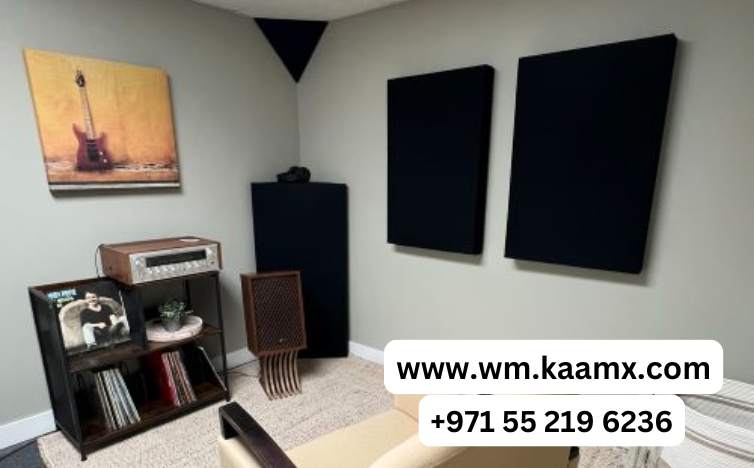Bass traps are specialized acoustic treatment devices designed to absorb low-frequency sound waves, which are typically the most challenging to control in any room. Unlike mid and high frequencies that can be managed with standard acoustic panels, bass frequencies (usually below 250Hz) require dedicated solutions due to their long wavelengths and high energy.
Bass traps are essential for recording studios, home theaters, and even living spaces where accurate sound reproduction and minimal distortion are critical.
Why Low Frequencies Are Hard to Control
Low-frequency sound waves have long wavelengths (ranging from several feet to over 20 feet), meaning they can easily reflect off walls, corners, and surfaces without losing much energy. This leads to:
- Bass buildup – Excessive low-end resonance in certain spots.
- Standing waves – Cancellation or reinforcement of frequencies, causing uneven bass response.
- Muddy sound – Poor clarity in music, movies, or speech.
Standard acoustic panels (like foam or thin fiberglass) are ineffective at absorbing these waves because they lack sufficient thickness and density.
How Bass Traps Work: The Physics of Absorption
Bass traps function by converting sound energy into heat through friction and air resistance. There are two main types, each working differently:
 1. Porous Absorber Bass Traps
1. Porous Absorber Bass Traps
- Made of dense, porous materials like rockwool, fiberglass, or acoustic foam.
- Work by forcing air molecules to slow down as they pass through the material, dissipating energy.
- Best for mid-to-low frequencies but require significant thickness (4″–12″ or more) to effectively absorb deep bass.
- Typically placed in room corners, where low frequencies naturally accumulate.
2. Resonant (Membrane/Hemholtz) Bass Traps
- Use tuned cavities or diaphragms to absorb specific bass frequencies.
- Hemholtz resonators (airtight boxes with a small opening) capture and cancel out targeted low frequencies.
- Membrane absorbers (thin wood or vinyl sheets over an air gap) vibrate in response to bass, converting energy into heat.
- More effective for very low frequencies (20Hz–100Hz) than porous traps.
Where to Place Bass Traps for Maximum Effect
Since low frequencies build up in corners and along boundaries, strategic placement is key:
Primary Locations:
- Room corners (trihedral spaces where three surfaces meet) – The most effective spots.
- Wall-ceiling and wall-floor junctions – Secondary bass hotspots.
- Behind speakers and listening positions – Helps reduce reflections.
Placement Tips:
- Use thicker traps (6″–24″) for deeper bass absorption.
- Cover at least 25%–50% of corner areas for noticeable improvement.
- Combine with broadband absorbers for full-range sound control.
Benefits of Using Bass Traps
- Tighter, More Accurate Bass – Reduces boominess and muddiness.
- Improved Clarity in Music & Speech – Eliminates low-end masking.
- Better Stereo Imaging – Minimizes phase issues caused by reflections.
- More Balanced Room Acoustics – Essential for mixing, mastering, and critical listening.
DIY vs. Professional Bass Traps
- DIY Options:
- Stacked mineral wool or fiberglass panels in corners.
- Wooden frame traps with insulation (Roxul Safe’n’Sound, OC 703).
- Affordable but may lack precision tuning.
- Commercial Bass Traps:
- Engineered for optimal absorption (e.g., Auralex, GIK Acoustics, Real Traps).
- Often include hybrid designs (porous + resonant).
- More effective but costlier.
Contact Muhammad Shaheen Carpentry at 971 55 219 6236, and discover the transformative science of soundproofing for your space.
Conclusion
If you’re serious about sound quality—whether for music production, home theater, or just a better listening experience—bass traps are a must-have. They address the most stubborn acoustic problems that regular panels can’t fix, leading to a cleaner, more balanced sound.
For best results, combine bass traps with mid/high-frequency absorbers and diffusers for a fully treated acoustic environment.

